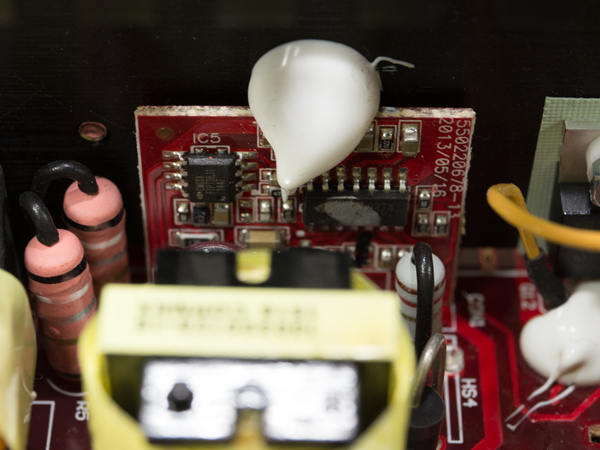Cooler Master V750 PSU Review
Cooler Master recently updated its lower-capacity V series, and today we take a look at the V750. This unit features 80 PLUS Gold efficiency, fully modular cabling and very small dimensions, which put it up against the SilverStone ST75F-GS V2.
Why you can trust Tom's Hardware
A Look Inside And Component Analysis
Parts Description
Before proceeding, we strongly encourage you to review our PSU 101 article, which includes valuable information about PSUs and their operation, allowing you to better understand the information provided below.
Our main tools for disassembling PSUs are a Thermaltronics soldering and rework station and a Hakko 808 desoldering gun.
| Primary Side | |
|---|---|
| Transient Filter | 4x Y caps, 3x X caps, 2x CM chokes, 1x MOV |
| Inrush Protection | NTC Thermistor and relay |
| Bridge Rectifier(s) | 1x Lite-On GBU1006 (600V, 10A @ 100 °C) |
| APFC MOSFETs | 2x MagnaChip MMF60R190PTH (650V, 12.7A @ 100 °C, 0.19 ohm ) |
| APFC Boost Diode | 1x STTH12R06D (600V, 12A @ 175 °C) |
| Hold-Up Cap | 1x Panasonic (450V, 560uF, 105 °C) |
| Main Switchers | 4x Infineon IPP50R280CE (650V, 12.8A @ 100 °C, 0.19 ohm) |
| APFC Controller | Champion CM6502 - CM03X |
| Switching Controller | Champion CM6901 |
| Topology | Primary side: Full bridge and LLC resonant converter Secondary side: Synchronous rectification & DC-DC converters |
| Secondary Side | |
| +12V MOSFETs | 4x Infineon IPP023N04N G (40V, 100A @ 90 °C, 2.3 mohm) |
| 5V & 3.3V | DC-DC Converters: 2x BSC050NE2LS FETs PWM Controller: 2x APW7073 |
| Filtering Capacitors | Electrolytics: Nippon Chemi-Con (105 °C, KY, KZE) United Chemi-Con (105 °C, LXZ) Suncon (105 °C) Rubycon (105 °C) Polymers: Unicon (TW) |
| Supervisor IC | SITI PS223 (OVP, UVP, OCP, SCP, OTP ) |
| Fan Model | Silencio A12025-25RB-2IN-F1 (120mm, 12V, 0.16A, 2250 RPM, Loop Dynamic Bearing) |
| 5VSB Circuit | |
| Rectifier | PFR 10V45CT |
| Standby PWM Controller | STR-A6069H |
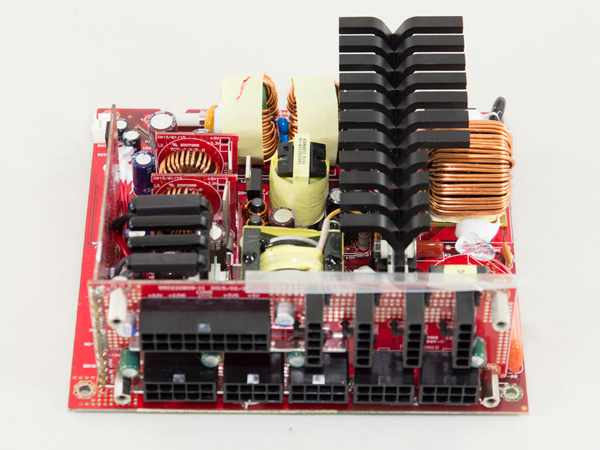
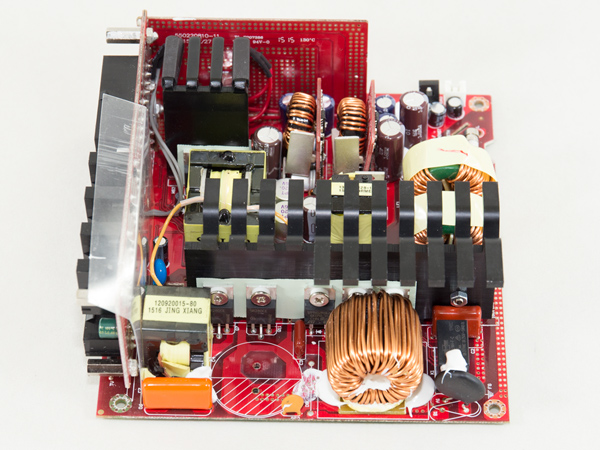
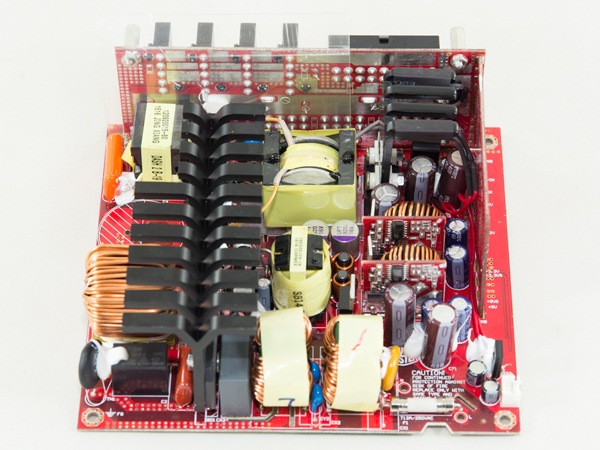
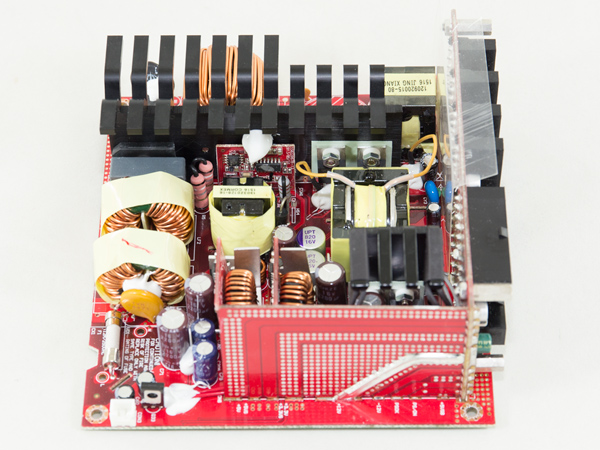
As mentioned, this PSU is made by Enhance Electronics, the same company responsible for the first VSM units. Cooler Master's V750 actually uses the same platform as the VSM750, with slight changes in various parts and the addition of a "3D" circuit required by the modular cabling design. This is a vertical PCB soldered directly onto the main board, which transfers the +12V rail to the modular sockets. Energy losses are consequently lower than if cables were used for this purpose. On top of that, internal airflow is improved.
A quick glance might not suggest that this is a 750W PSU; it's just so small. The main transformer is diminutive, and as you can see in the photos, it's only a little larger than the resonant tank. The DC-DC converters that generate the minor rails are also quite small. Thanks to those compact components, the PCA doesn't appear as crowded as you might expect.
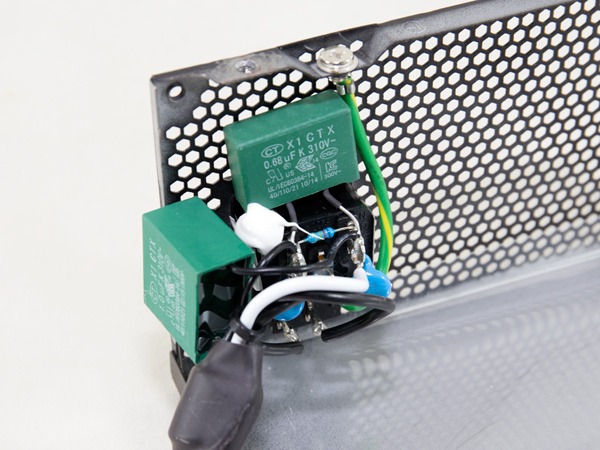
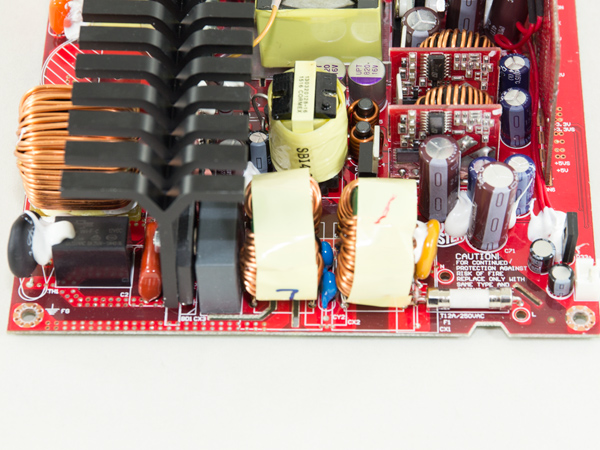
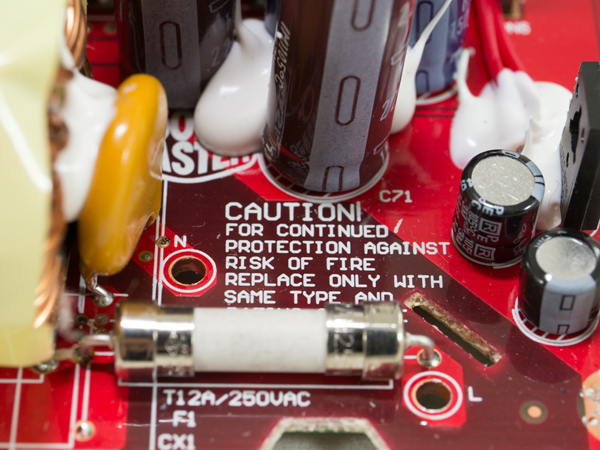
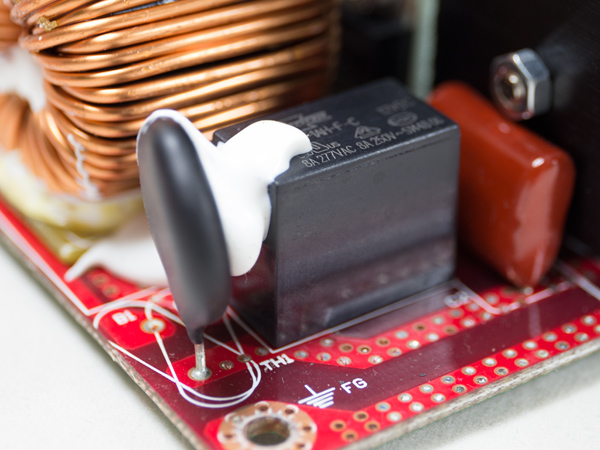
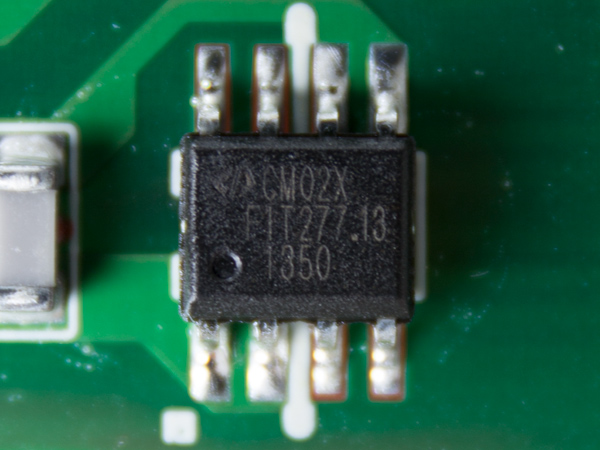
The EMI filter starts at the AC receptacle, as usual, and includes two X and a pair of Y caps. It continues on the main PCA with one X and two Y caps, two CM chokes and an MOV. We also found an NTC thermistor that protects against large inrush currents, accompanied by an electromagnetic relay to bypass it once the start-up phase finishes. On the solder side of the PCB, we found a CM02X under the transient filter, which blocks the current through a X cap's discharge (bleeding) resistor once AC is connected.
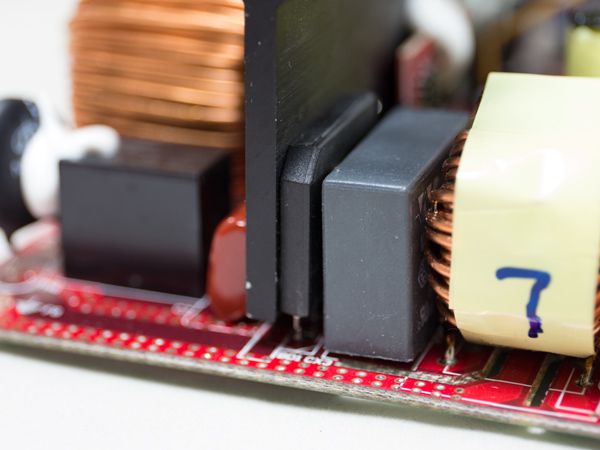
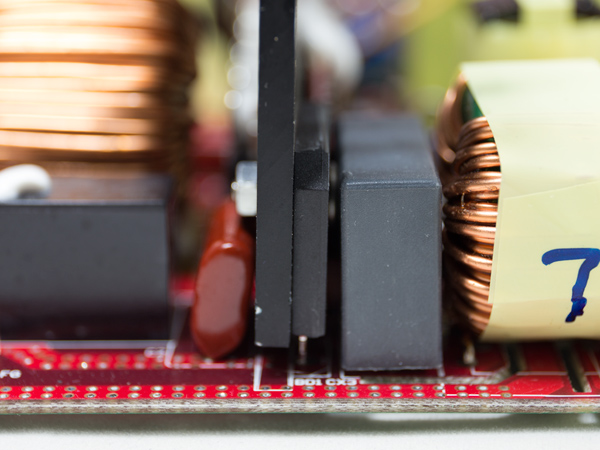
The single bridge rectifier is bolted on the large APFC heat sink. It's most likely the same one used in the VSM750, a Lite-On GBU1006. We can't be certain, unfortunately, since the nearby X capacitor blocks our view. If the OEM indeed stuck with the GBU1006, then with lower VAC inputs (around 100V) and full load, the bridge rectifier will operate close to its limits.
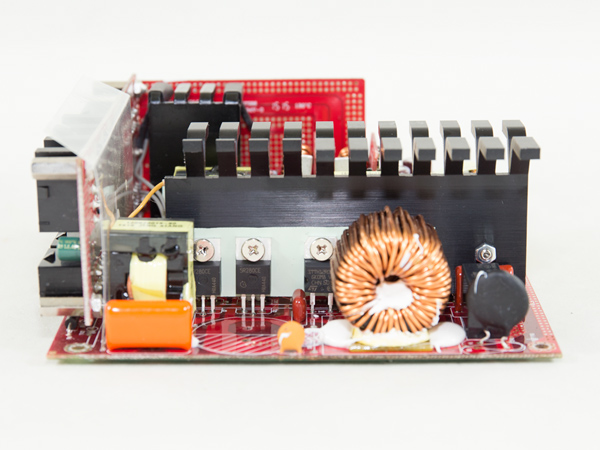
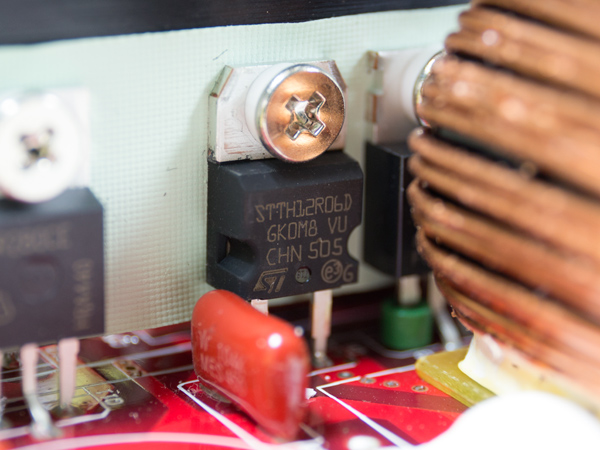
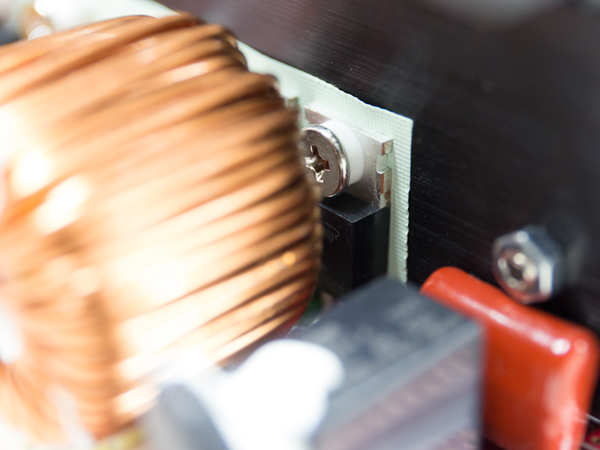
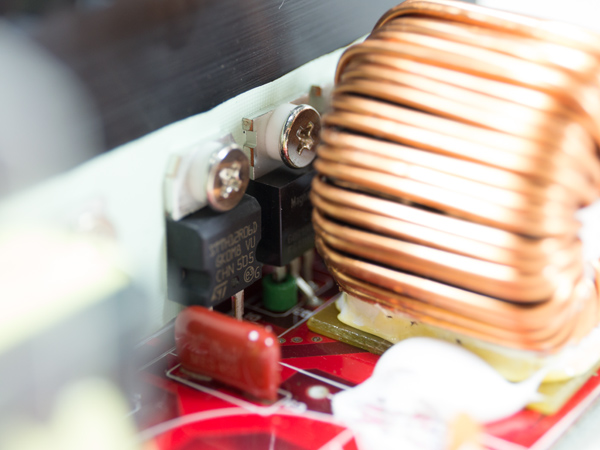
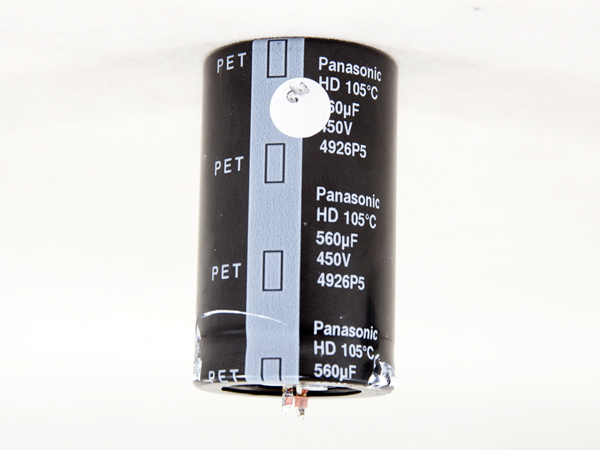
Instead of the Infineon FETs that the VSM750 uses, we found two MagnaChip MMF60R190PTHs in the APFC converter. Enhance also uses a different boost diode, an STTH12R06D, instead of a CREE one. The bulk cap is by Panasonic (450V, 560uF, 105 °C) and has enough capacity to meet the PSU's requirements.
Get Tom's Hardware's best news and in-depth reviews, straight to your inbox.
The PFC controller is a Champion CM6502 IC, supported by a CM03X Green PFC controller. Both are installed on a small daughterboard.
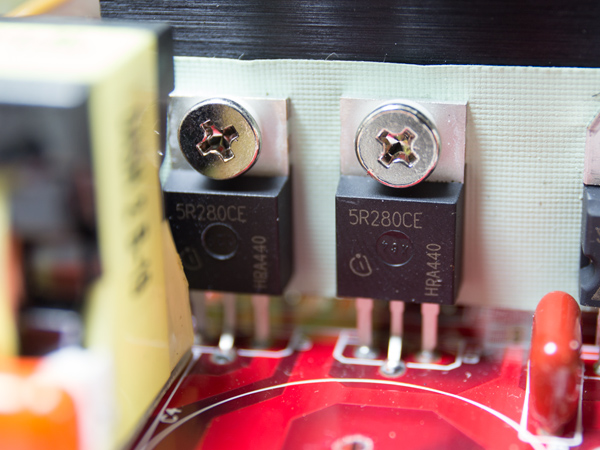
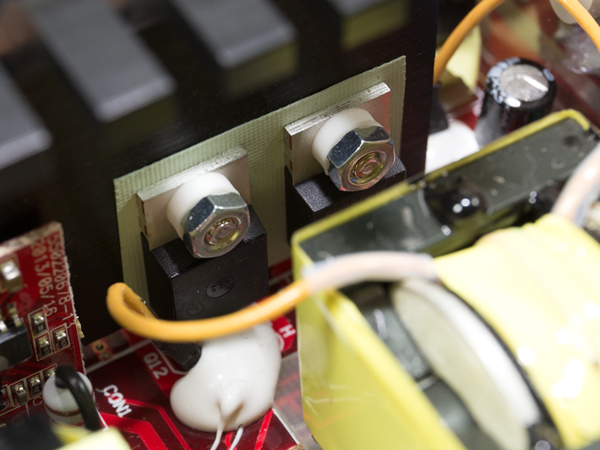
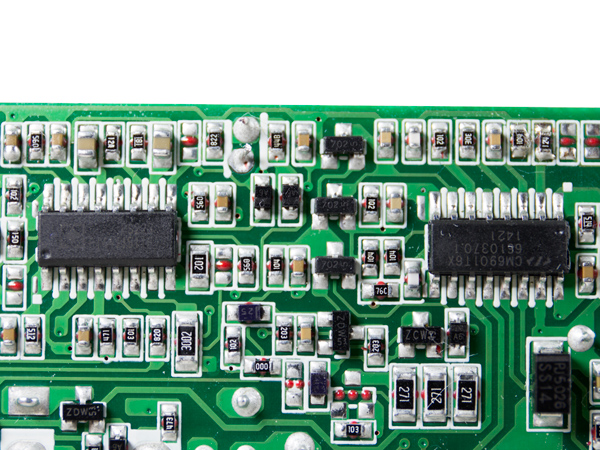
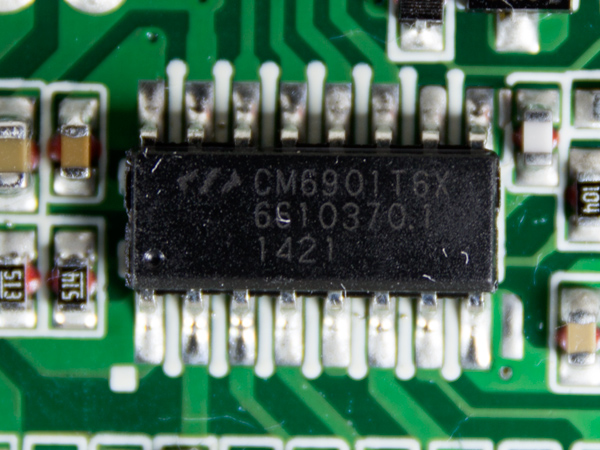
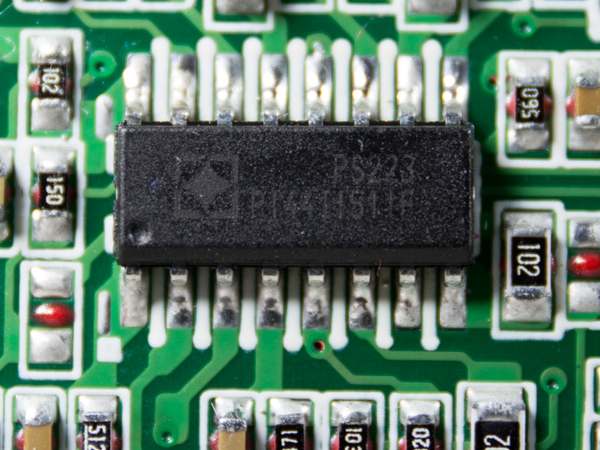
The main switches, four Infineon IPP50R280CEs, are arranged into a full bridge topology (among the best for high performance and low energy loss). There is also an LLC resonant converter that allows for even higher efficiency. The LLC and PWM resonant controller is a Champion CM6901, which is installed on the solder side of the main PCB. Right next to the CM6901 is the supervisor IC, a SITI PS223, armed with support for all basic protection features.
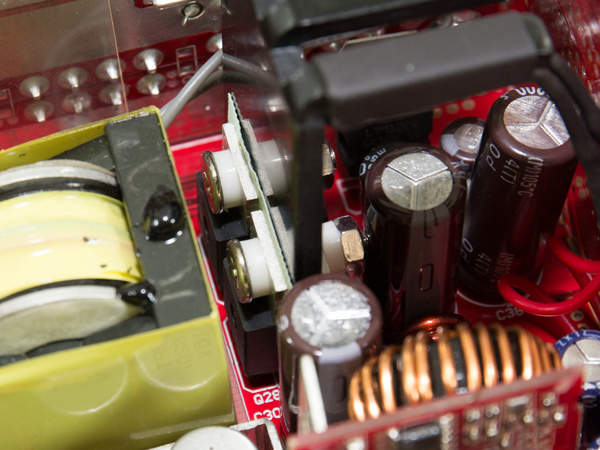
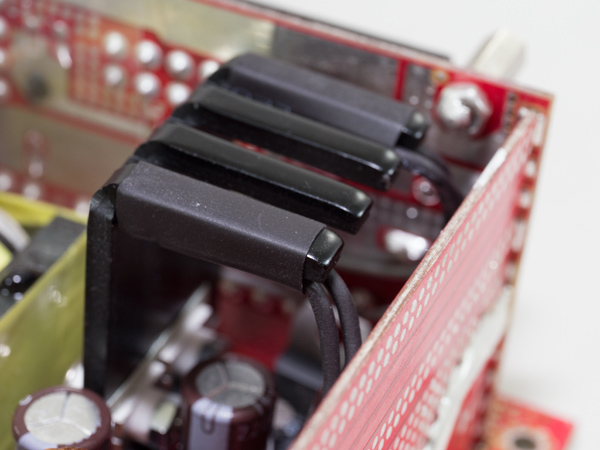
In the secondary side, four Infineon IPP023N04N Gs installed on a small heat sink rectify the +12V rail. Two thermistors are attached to the heat sink fins tasked with cooling down the +12V FETs. One provides temperature information to the fan control circuit and the other one is used by the over-temperature protection.

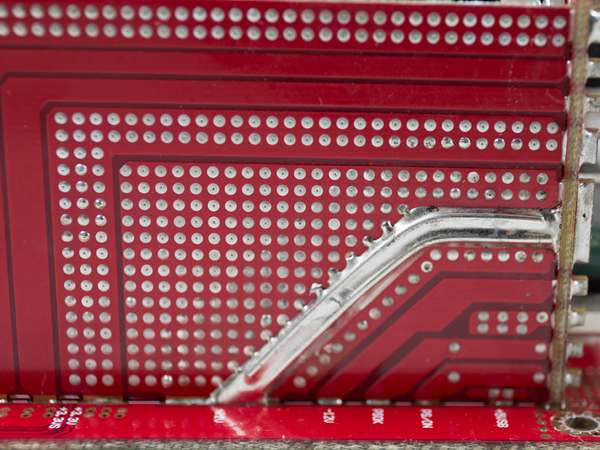
This PCB transfers the +12V rail to the modular sockets. It manages to accomplish this with minimal power loss, which makes a real difference in efficiency, especially at high loads.
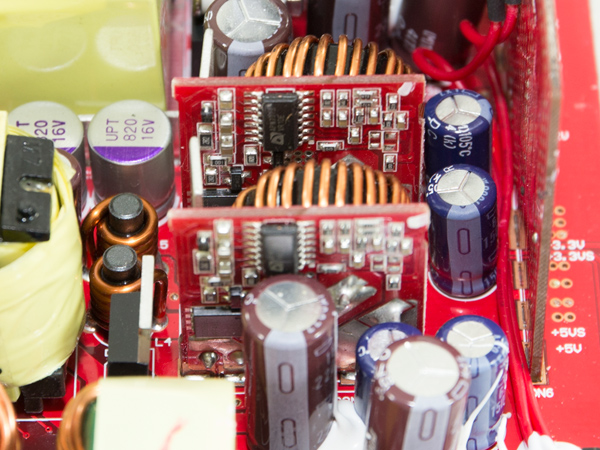
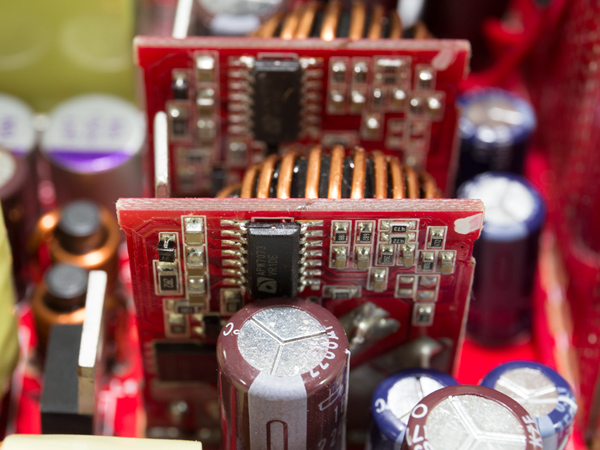

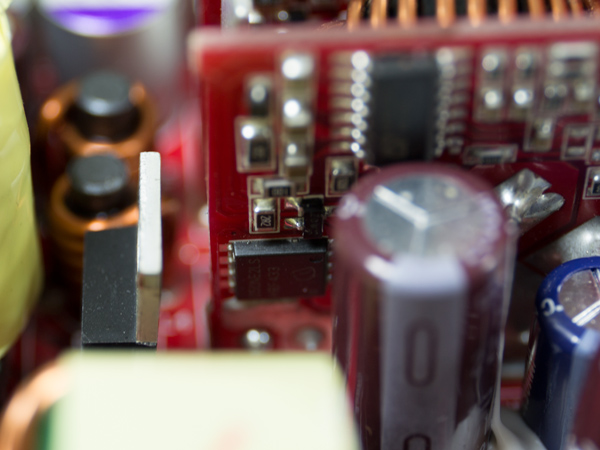
The minor rails are regulated by two small DC-DC converters that are hosted on an equal number of vertical daughterboards. Each converter uses a couple of BSC050NE2LS FETs along with an Anpec APW7073 PWM controller.
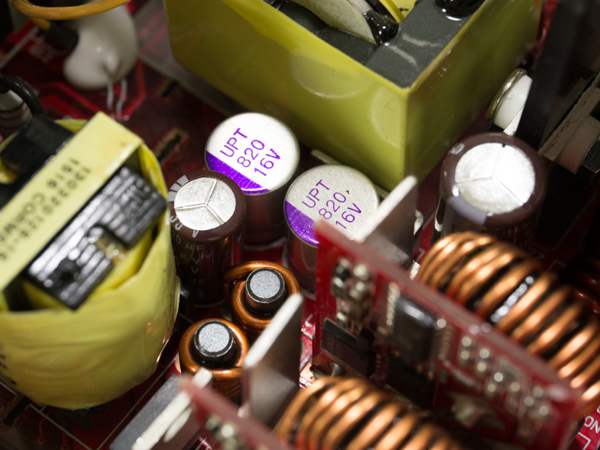
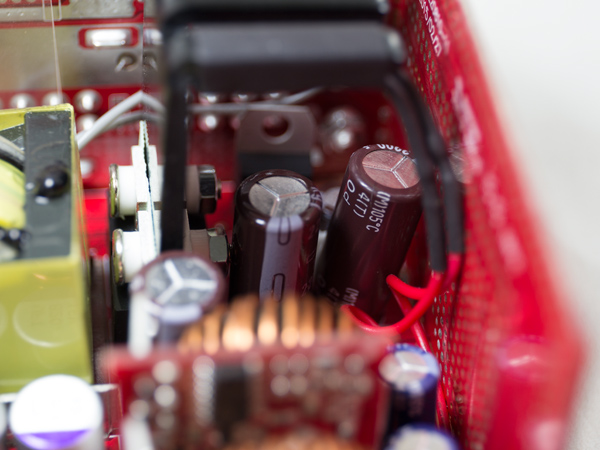
The filtering caps on the main PCB are a mix of Nippon Chemi-Con, United Chemi-Con and Rubycon. All are rated at 105 °C, so they'll last, even under tough conditions. We also found several polymer caps, which most likely come from Unicon.
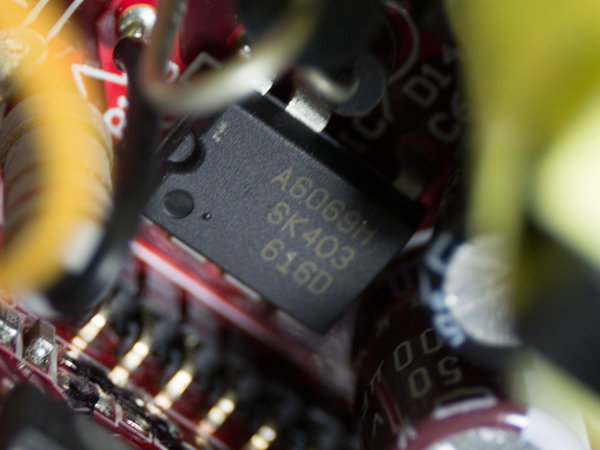
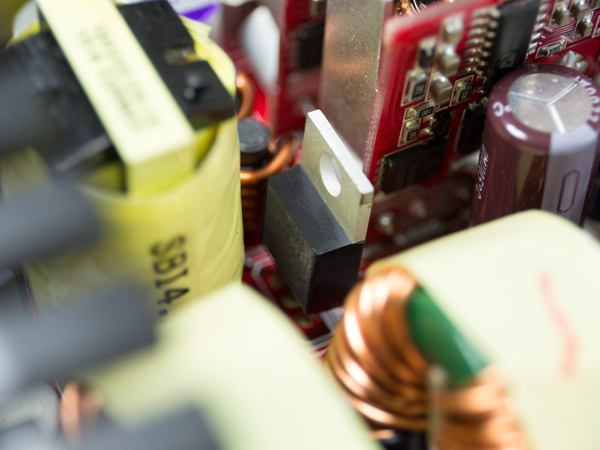
The PWM controller is an STR-A6069H and the Schottky Barrier Rectifier (SBR) that regulates the 5VSB rail is a PFR 10V45CT.
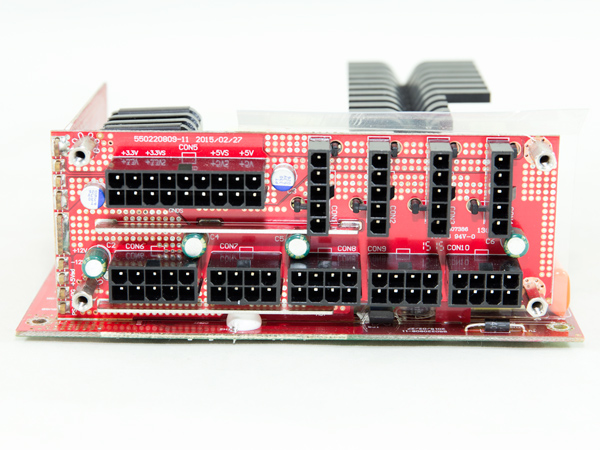
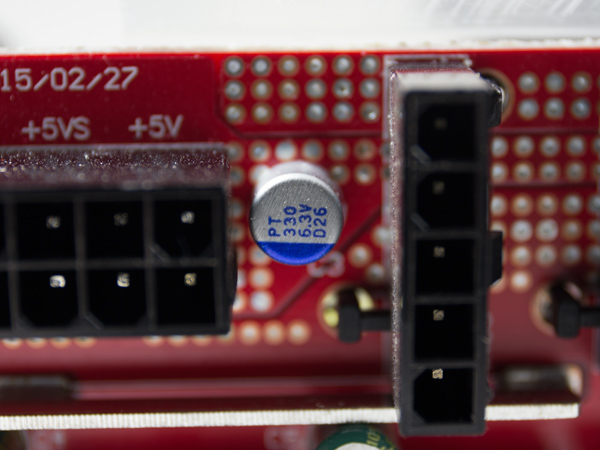
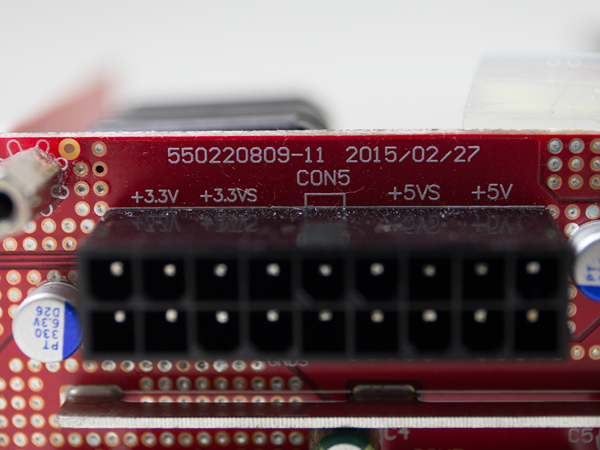
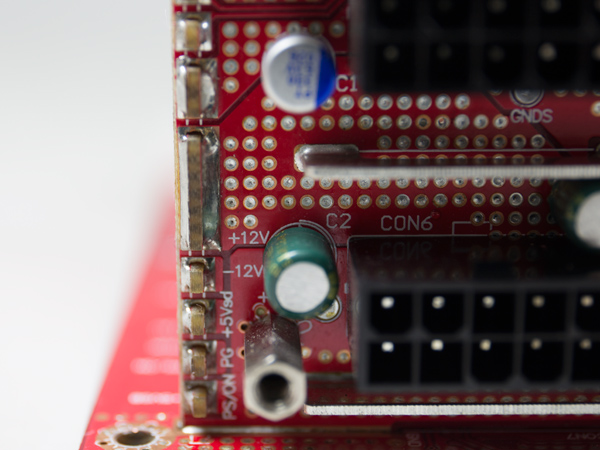
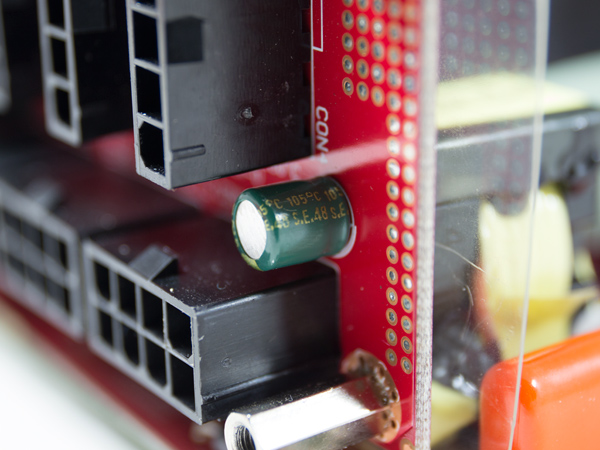
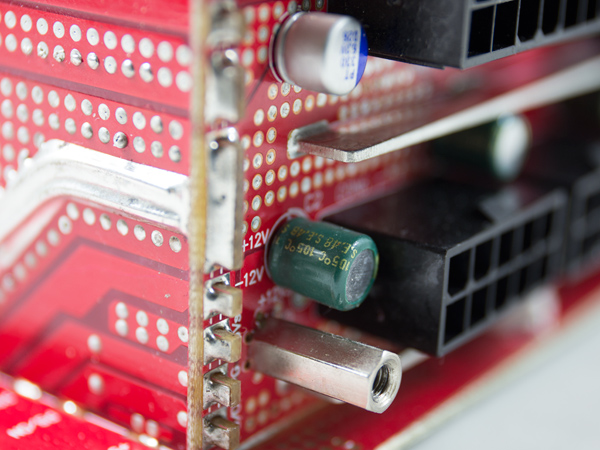
Several Suncon (Sanyo) electrolytic caps (along with two polymer ones) provide extra ripple filtering at the front side of the modular PCB.
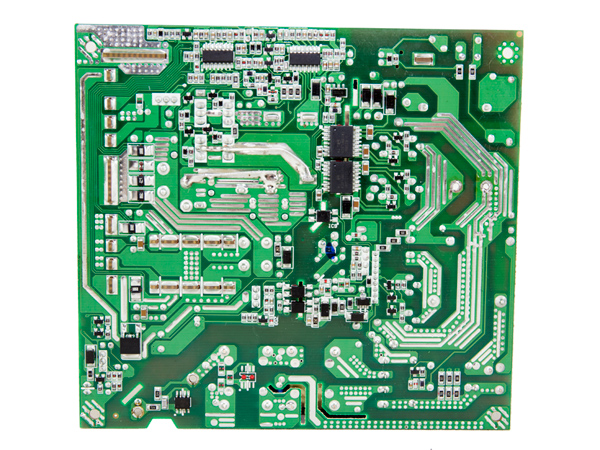
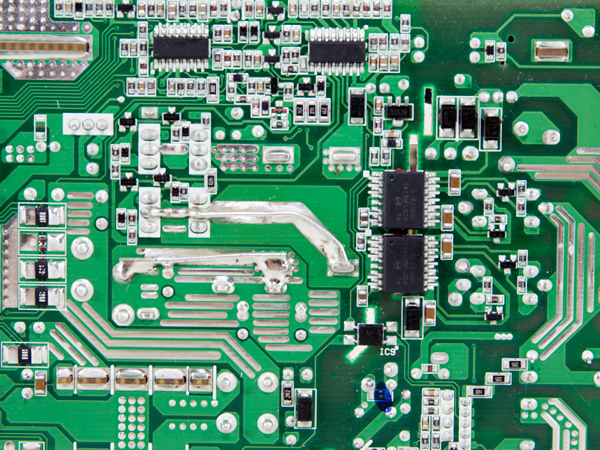
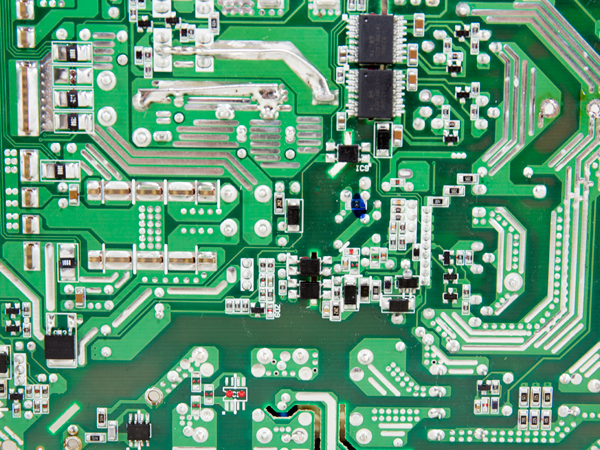
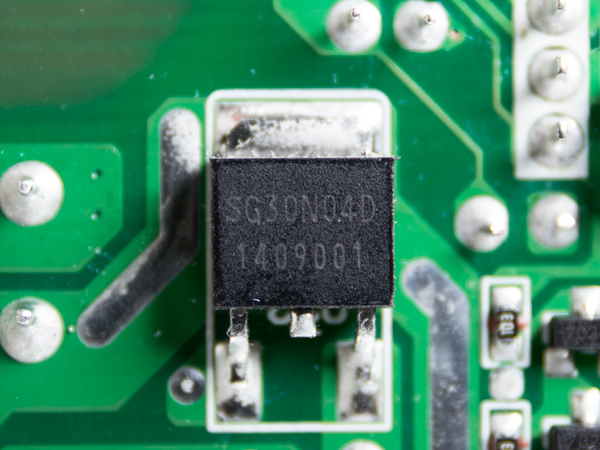
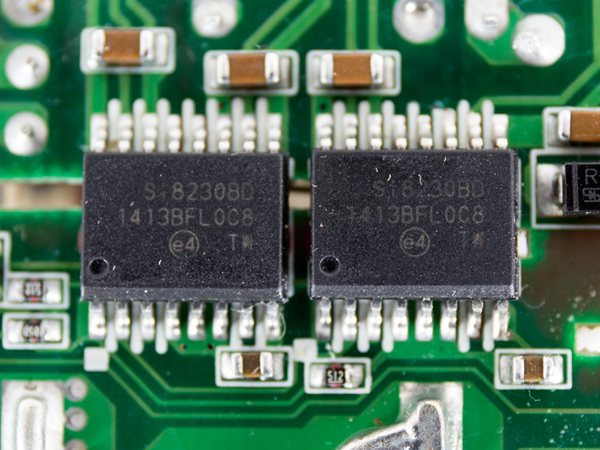
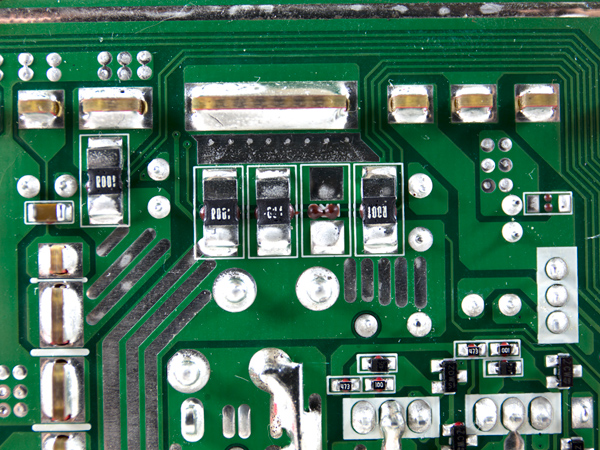
The soldering quality is good; that's something we've come to expect from Enhance's implementations. We also noticed a couple of PCB traces that were touched up after production using copper wires. Finally, we also found a couple of Silicon Labs Si8233BD isolated drivers, along with a SG30N04D FET that feeds the 5VSB rail from the 5V one.
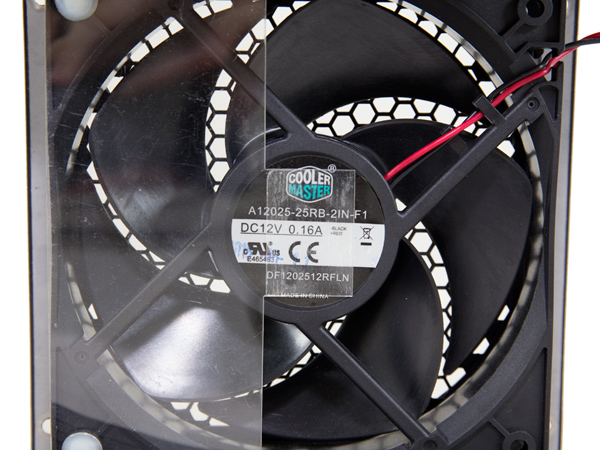
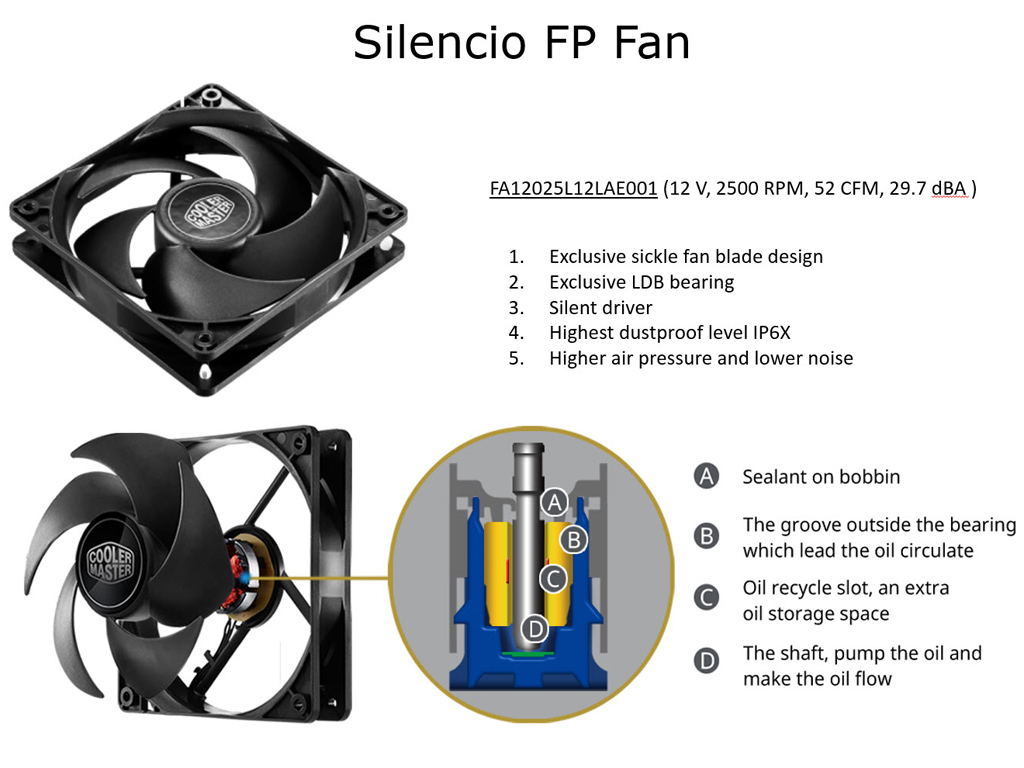
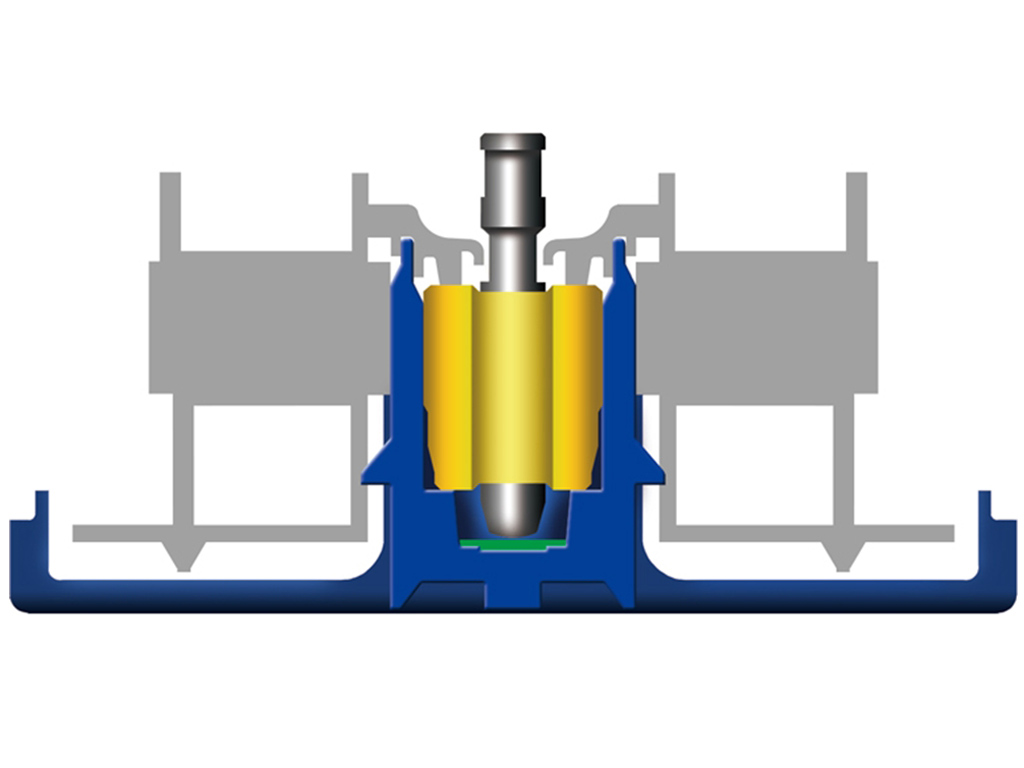
The fan uses a type of bearing that we have never encountered. It is called Looped Dynamic Bearing, and according to the schematics shared by Cooler Master, it looks to be an FDB (Fluid Dynamic Bearing) derivative. According to CM, this bearing has a lifetime that stretches up to 160,000 hours. Based on that fact alone, it'd be a serious upgrade over the VSM750's double ball-bearing fan with a <100,000 hour life. On top of that, the LDB is dust-proof.
Current page: A Look Inside And Component Analysis
Prev Page Packaging, Contents, Exterior And Cabling Next Page Load Regulation, Hold-Up Time And Inrush Current
Aris Mpitziopoulos is a contributing editor at Tom's Hardware, covering PSUs.
-
Nuckles_56 I couldn't see it mentioned, but could any of the other cables be plugged in where they shouldn't be?Reply -
Giannis Karagiannis But then again with a wire cutter and a little bit of insulating tape everything is possible... :PReply -
Gam3r01 I think TH reviews should take a bit from Jonnyguru or similar and include a point scale at the end. Sure listing the pros and cons with a verdict is enough in most cases, but its up to the reader to decide just how good or bad a unit may be.Reply -
Aris_Mp I agree with you on this, however on page #9 among others you will find a performance graph which can easily play the same role. On top of that it offers comparison data including relevant offerings so a reader can easily figure how the product fares against the competition.Reply -
Gam3r01 While that is included, it dosent give an overall final score. Saying the RMx scored 9% higher is alot different to readers than saying the RMx got a 9.8/10 for ecample.Reply -
SamSerious Point Scales are horrible and i am glad that TH is one of the few remaining sites not to do so. There are already enoguh websites and magazines for people who prefer points, and stars over content.Reply
